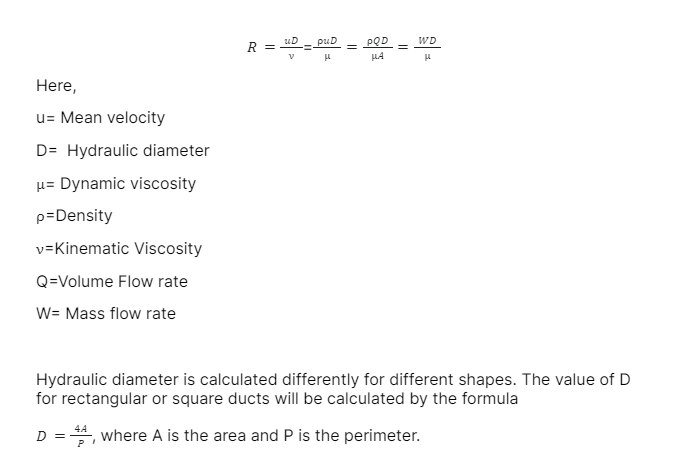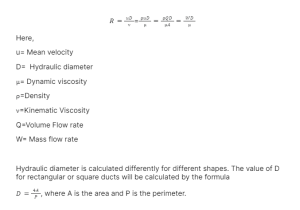Reynold’s number is defined as the ratio of the inertia force of fluid to the viscous force of the moving fluid with different velocities. The Reynold’s number describes the nature of the fluid flow, whether it is a turbulent or laminar flow. If the fluid flows in a streamlined direction, it is called the laminar flow, and if the fluid flows in all directions with random motion, the flow is turbulent. So if the value of Reynold’s number is small, then it is a laminar flow, and if the value is high, then it is a turbulent flow. Higher values of Reynold’s number indicate turbulent flow, and the lower value of Reynold’s number will indicate laminar flow.
History
In 1883 Osborne Reynolds performed an experiment to understand the transformation of the fluid from laminar to turbulent flow under different flow conditions. In his experiment, he took clear water in a large glass pipe and dyed a stream at its centre to understand the behaviour of the dyed stream at different velocities. When the water flows at lower velocities, the dyed stream flows in a straight path without spreading anywhere in the water. However, when the velocity increases, the dye starts to lose its stream, spreading all over the glass tube. So the point where the stream breaks and starts to flow all over in the pipe is the transition point from laminar to turbulent flow.
Formula
The formula for the calculation of the Reynold’s number for the fluid flowing in a pipe will be given as:

Boundary Layer Phenomenon
Suppose if fluid flows on the flat plate, then due to the no-slip condition, the velocity of the fluid at the edge or lowermost layer will become zero. Due to high viscosity, the upper layers will also move with lower velocities. And the velocity gradually decreases as the height of the fluid increases over the plate. Due to this, at lower velocity and high viscosity at the bottom, the fluid will flow in a streamline, or the fluid flow will be laminar. Still, as the uppermost layers have minimum viscosity and the velocity is also high, the transition of the fluid takes place from laminar to turbulent.
Reynold’s number for flat plate
The value of Reynold’s number for the fluid flowing on a flat plate will be R= 5 X 105 the value of Reynold’s number is lower than 5 X 105, then the flow will be laminar, and if the value of Reynold’s number is greater than 5 X 105 so the flow will be turbulent.
Reynold’s number for Circular pipe
In a circular pipe, the value of Reynold’s number varies from 2300 to 2900. If the value of Reynold’s number is greater than 2900, then it will be a turbulent flow. If the value of Reynold’s number is less than 2300, it will be a laminar flow.
Conclusion
Here we learned about the behaviour of the fluid, whether it is a laminar flow or a turbulent flow, by knowing the values of Reynold’s number of the fluid. If the value of Reynold’s number is higher, then there will be a turbulent flow. If it is lower, then there will be laminar flow.
 Profile
Profile Settings
Settings Refer your friends
Refer your friends Sign out
Sign out







